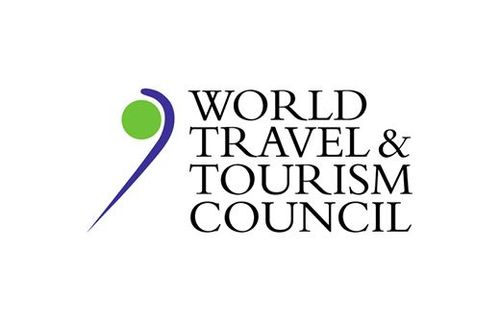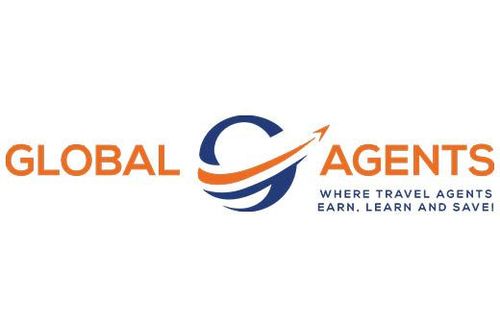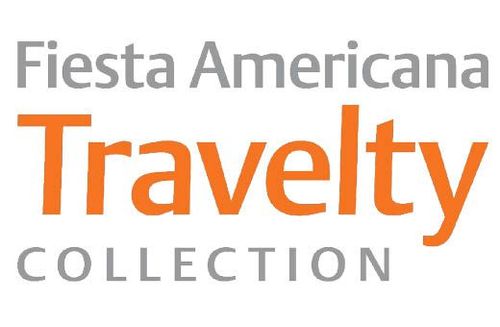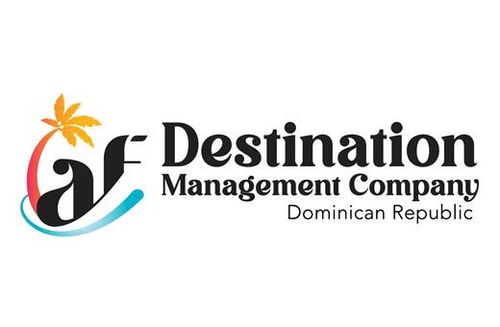Where travel agents earn, learn and save!
News / WTTC expects severe tourism job shortfalls this year in three key European markets, the UK, Italy and Portugal
Up to one in six jobs in the Portugal, one in seven in Italy and one in eight in UK will remain unfilled due to labour shortages

Portugal’s Travel & Tourism sector faces job shortfall of 85,000 this year
A new analysis of staff shortages by the World Travel & Tourism Council (WTTC), has revealed a significant labour shortfall in Portugal, with 85,000 Travel & Tourism jobs across the country predicted to be unfilled by the end of this year.
The worrying new figures from WTTC, which represents the global private Travel & Tourism sector, show for the first time the significant impact staff shortages could have on Portugal’s overall economic recovery.
Data compiled by Oxford Economics for WTTC, analyzed staff shortages across Portugal and other major Travel & Tourism markets including the U.S., Spain, the UK, Italy and France, focusing on the period between July-December 2021 and 2022.
All countries showed significant staff shortages, with employment demand starting to outstrip the available labour supply.
As unemployment rates decrease and demand rises, Travel & Tourism businesses have been left struggling to fill available job vacancies, and the report reveals that Portugal’s Travel & Tourism sector is set to witness a staggering one in six job vacancies left unfilled.
The global tourism body also warns reinstating harmful travel restrictions, such as the recent measures amid the surge of the new variant, do not stop the spread of the virus.
It says they only hinder the recovery of the sector and add to the already significant issue with labour shortages.
The Portuguese government implemented a job retention scheme and offered further financial support and schemes which saved businesses and jobs up and down the country.
However, despite this much-needed support, 92,000 people working directly in the Portuguese Travel & Tourism sector lost their job last year.
The ‘WTTC Staff Shortages Report’ goes on to show that as the demand for travel began to strengthen during the second half of 2021, particularly throughout the summer months due to the easing of restrictions, it increased the pressure on the sector following months of limited activity and the labour supply was unable to match the rising labour demand.
With this rise in demand, labour shortages are set to reach 85,000, equating to one in six unfilled vacancies.
Next year, the labour market is expected to remain tight with a further forecast average shortage of 53,000 workers causing further harm to the embattled sector.
WTTC’s report outlines solutions for governments and businesses to tackle the looming crisis of labour shortages, recognizing the impact of furlough schemes.
These include facilitating labour mobility and remote working, providing social safety nets, upskilling and reskilling the workforce and retaining talent, and creating and promoting education and apprenticeships.
The global tourism body’s recent report revealed the devastating impact COVID-19 has had on the Travel & Tourism sector with 62 million total jobs lost globally.
WTTC says staff shortages represent a major issue for the global Travel & Tourism sector, and while issues around supply and demand are set to gradually adjust during 2022, the problem is likely to remain and urgently needs to be addressed.
The sector’s recovery and economies around the world depend on businesses and government’s ability to solve this critical issue to meet the returning demand for travel.
Italy’s Travel & Tourism sector to see a staggering job shortfall of more than a quarter of a million this year
A new research by the World Travel & Tourism Council (WTTC) has revealed a massive labour shortfall, with 263,000 direct Travel & Tourism jobs in Italy remaining unfilled by the end of 2021.
The research, in collaboration with Oxford Economics, analyzed labour shortages across Italy and other major Travel & Tourism destinations, such as the U.S., France, Spain, the UK and Portugal, focussing on the period between the second half of 2021 and 2022.
The comprehensive research reveals staff shortages across all six countries, with employment demand starting to outstrip the available labour supply.
The research shows that of the European countries analyzed, Italy is the most impacted, predicted to see a shortfall of a shocking 263,000 jobs with one in seven vacancies left unfilled this year.
The global tourism body also warns reinstating damaging travel restrictions, such as recent measures aimed at curbing the spread of the new COVID-19 variant, do not stop the spread of the virus and only damage livelihoods.
According to WTTC’s report, in 2020 the Italian Travel & Tourism sector experienced a 12.4% reduction in direct* employment, equating to 215,000 job losses.
As the travellers’ ‘wanderlust’ increased during the second half of 2021, and in line with the easing of restrictions which brought Travel & Tourism to an almost complete standstill, the labour demand is now outstripping the supply.
Next year the labour market is set to adjust, partially linked to the comparatively high unemployment rate in Italy, although staff shortages could remain within specific industries of Travel & Tourism.
WTTC’s report outlines solutions for governments and Travel & Tourism stakeholders to tackle the alarming labour shortages, recognizing the impact of furlough schemes.
These include facilitating labour mobility and remote working, providing social safety nets, upskilling and reskilling the workforce and retaining talent, and creating and promoting education and apprenticeships.
Before the pandemic struck, Travel & Tourism was one of the largest sectors globally, accounting for one in 10 jobs, while also supporting millions of livelihoods.
In 2020, when COVID-19 brought international travel to a grinding halt, 62 million jobs were lost, representing a drop of 18.5%, leaving just 272 million employed globally across the sector.
According to WTTC’s latest projections, the global Travel & Tourism sector’s employment is set to rise by 0.7% by the end of 2021, representing an additional 2 million jobs, followed by a year on year increase of 18% in 2022, reaching 324 million jobs – only 10 million below pre-pandemic levels.
Although WTTC’s latest research showcases the devastating consequences COVID has had on the Travel & Tourism sector’s employment, proactive actions and measures taken by many governments globally have enabled the sector to save millions of jobs and livelihoods through various job retention schemes.
According to the global tourism body, staff shortages represent a key challenge for the global Travel & Tourism, and it is crucial for the sector to solve this issue to be able to meet the returning demand for travel.
UK Travel & Tourism sector sees a massive job shortfall of more than 200,000 this year
A new analysis of staff shortages by the World Travel & Tourism Council (WTTC), has revealed a significant labour shortfall that could harm the sector’s recovery, with 205,000 Travel & Tourism jobs across the UK predicted to remain unfilled by the end of this year.
The worrying figures from WTTC, which represents the global private Travel & Tourism sector, shows for the first time the enormous impact that staff shortages could have on the UK’s economic recovery.
Data compiled by Oxford Economics for WTTC, analyzed staff shortages across the UK and other major Travel & Tourism markets including the U.S., Spain, France, Italy and Portugal, between July - December 2021 and 2022.
All countries showed significant staff shortages, with employment demand starting to outstrip the available labour supply.
As unemployment rates decrease and demand rises, Travel & Tourism businesses have been left struggling to fill available job vacancies.
The UK alone is predicted to see a shortfall of around 12%, with a staggering one in eight job vacancies left unfilled.
The global tourism body also warns reinstating damaging travel restrictions, such as the recent measures aimed at curbing the spread of the new variant, do not stop the virus and only damage livelihoods.
Since the start of the pandemic, the UK job retention scheme paid furloughed workers 80% of their pre-pandemic income, with workers earnings up to a maximum of £2,500 a month.
As a result, the fall in employment was not as sharp as the fall in demand for the sector, leading to a reduction of only 6.5% in direct* Travel & Tourism employment in 2020, which equates to 111,000 job losses.
As the demand for travel began to strengthen during the second half of 2021, in line with easing of restrictions and the recovering domestic market, the squeeze on labour has been unable to match the rising demand.
According to the report, demand for Travel & Tourism jobs is forecast at nearly 1.7 million in the second half of 2021, with labour shortages projected at 205,000, equating to one in eight unfilled vacancies.
Next year, the labour market is expected to remain tight with a forecast shortage of 15,000 workers.
WTTC’s report outlines solutions for governments and businesses to tackle the looming crisis of labour shortages, recognizing the impact of furlough schemes.
These include facilitating labour mobility and remote working, providing social safety nets, upskilling and reskilling the workforce and retaining talent, and creating and promoting education and apprenticeships.
The global tourism body’s recent report revealed the devastating impact COVID-19 has had on the Travel & Tourism sector with 62 million total jobs lost globally.
However, the proactive measures and action by many governments enabled the sector to save millions of jobs and livelihoods at risk through various job retention schemes.
WTTC says staff shortages represent a key issue for the global Travel & Tourism sector, and while issues around supply and demand are set to gradually adjust during 2022, the problem is likely to remain.
The sector’s recovery and economies around the world depend on businesses and government’s ability to solve this critical issue to meet the returning demand for travel.











